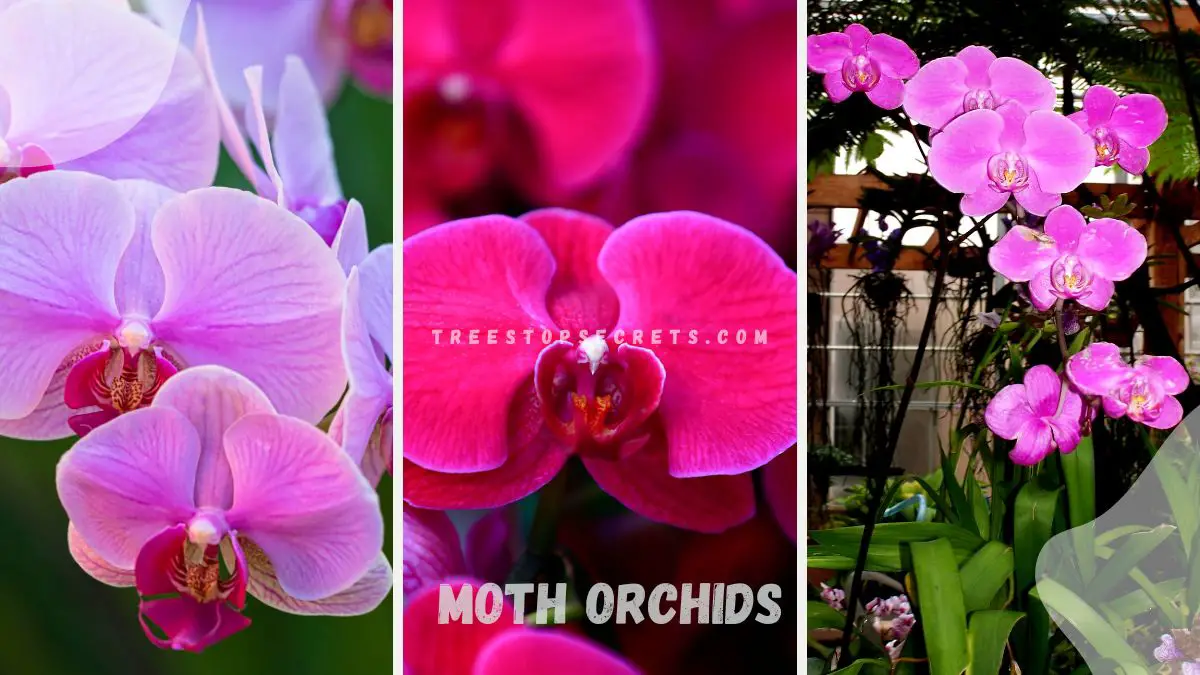Moth Orchids are one of the most popular and elegant orchid varieties, perfect for both beginners and seasoned gardeners. Their stunning, long-lasting flowers come in various colors, making them a delightful addition to any indoor space. Whether you’re looking to brighten your home or expand your gardening skills, I can provide practical tips and insights to help you care for Moth Orchids effectively.
Moth Orchids, scientifically known as Phalaenopsis, thrive in indirect light and high humidity. They prefer temperatures between 65-75°F (18-24°C) and should be watered once a week, allowing the potting medium to dry out slightly between waterings. These orchids benefit from a balanced fertilizer applied every two weeks during their growing season. They typically bloom once a year, with flowers lasting up to three months. Proper care includes repotting every two years and monitoring for pests like scale or aphids.
If you're eager to enhance your Moth Orchid's health and beauty, I have additional tips and detailed guides to share. These include troubleshooting common issues, advanced watering techniques, and ways to encourage more frequent blooming.
Key Takeaways
- Provide Proper Care: Moth orchids thrive with indirect light, consistent watering, and well-draining medium.
- Encourage Blooming: Maintain a temperature drop at night, fertilize regularly, and trim spent spikes to promote reblooming.
- Identify and Address Issues: Watch for signs of overwatering, pests, or root rot; address promptly to ensure plant health.
- Experiment with Propagation: Explore division or keiki propagation methods based on plant type and preferences.
- Explore Advanced Techniques: Try techniques like repotting, adjusting humidity levels, or using specialized fertilizers for optimal growth.
- Stay Informed: Refer back to specific sections for detailed guidance on understanding, caring for, and troubleshooting moth orchids.
Understanding Moth Orchids
Light Needs
Moth orchids thrive in bright, indirect light, making east-facing windows ideal for their growth. Direct sunlight can harm them, so it's crucial to monitor and adjust light levels accordingly.
- Place in east-facing windows
- Avoid direct sunlight
- Monitor light exposure
Soil Preferences
For proper aeration and moisture control, use a mix of orchid bark and sphagnum moss when potting miniature moth orchids. Repotting every few years helps refresh the growing medium and promotes healthy root development.
- Use orchid bark mix
- Repot every few years
- Avoid regular potting soil
Watering Tips
It's essential to allow the planting material of moth orchids to slightly dry between waterings to prevent root rot. Water thoroughly only when the bark or moss feels dry to the touch, as overwatering is more detrimental than underwatering.
- Allow slight drying between waterings
- Water when material feels dry
- Overwatering is harmful
Temperature and Humidity
Maintain home temperatures between 70-80°F during the day and above 60°F at night to provide optimal conditions for moth orchids. Extreme temperatures should be avoided, with humidity levels kept adequate through misting or using a pebble tray to prevent leaf wrinkling of orchid.
- Maintain home temperatures
- Avoid extreme temperatures
- Ensure adequate humidity levels
Optimal Care for Moth Orchids
Fertilizing Techniques
When caring for moth orchids, it's essential to fertilize them properly. Apply orchid fertilizer following the instructions on the package for optimal growth. Fertilize your moth orchids twice a month, excluding the winter months when they are dormant. Consider using slow-release plant food as a convenient way to feed your orchids regularly.
Potting Essentials
Proper potting is crucial for the health of your moth orchids. Choose a well-draining potting mix to prevent waterlogging, which can lead to root rot. Select a pot with adequate drainage holes to ensure excess water can escape, preventing water accumulation that can harm the roots. Ensure that the pot size allows for proper root growth and stability, providing ample space for the roots to spread out and develop.
Repotting Practices
Regular repotting is necessary to maintain the health of your moth orchids. Repot your orchids every few years to refresh the growing medium, promoting better nutrient absorption and root health. Check for overcrowded roots as a sign that repotting is needed; crowded roots can restrict growth and lead to poor plant health. Use a clean pot and fresh potting mix when repotting to prevent the introduction of pests or diseases and provide a healthy environment for your orchid to thrive.
Propagation and Types
Propagating Methods
Propagate moth orchids by dividing the root system carefully with a sharp, sterile tool. Ensure each division has ample roots for healthy growth.
- Use a sharp, sterile tool
- Ensure sufficient roots and healthy growth
Orchid Varieties
Explore various Phalaenopsis orchid species for diverse bloom colors and sizes. Consider hybrid varieties for unique flower patterns and shapes.
- Phalaenopsis species for different bloom colors
- Hybrid varieties for unique flower patterns
Encouraging Blooms
Bloom Boosting Tips
To encourage blooms in moth orchids, ensure they receive adequate light to promote blooming. Proper temperature and humidity levels are crucial for healthy flower development. Avoid disturbing the plant during bud formation to ensure successful blooming.
- Provide adequate light to promote blooming.
- Maintain proper temperature and humidity levels for healthy flower development.
- Avoid disturbing the plant during bud formation to ensure successful blooming.
Common Issues and Solutions
Pest Management
Inspect moth orchids regularly for aphids and spider mites. Treat infestations promptly with insecticidal soap or neem oil. Isolate infected plants to prevent pest spread.
Disease Control
Monitor moth orchids for root rot or fungal infections. Improve air circulation to prevent diseases. Treat infected plants with suitable fungicides or bactericides.
Flopping Prevention
Support tall flower spikes with stakes to prevent bending. Use gentle ties to secure stems without causing damage. Trim damaged or weak stems for plant aesthetics.
Yellowing Leaves
Address yellowing leaves promptly to prevent further damage. Check for overwatering or underwatering issues. Adjust watering frequency and light exposure for healthy leaves.
Bud Drop Solutions
Identify causes like temperature changes or low humidity for bud drop. Maintain consistent care routines to minimize stress. Provide stable environmental conditions during bud development.
Advanced Tips
Pruning for Growth
Pruning dead or yellowing leaves is essential for encouraging new growth in moth orchids. By removing these unhealthy leaves, the plant can focus its energy on producing fresh, vibrant foliage. Trimming spent flower spikes redirects the orchid's resources towards generating new blooms, ensuring a continuous flowering cycle. To prevent the spread of diseases, always use sterile pruning tools when cutting any part of the plant.
- Prune dead or yellowing leaves to encourage new growth.
- Trim spent flower spikes to redirect energy towards new blooms.
- Use sterile pruning tools to prevent the spread of diseases.
Preventing Flop
To avoid the issue of orchid stems bending or flopping, provide adequate support by using stakes or trellises. This support system helps maintain the upright posture of the plant and prevents any structural damage. Proper watering practices are crucial in keeping orchid stems turgid and preventing wilting. Regularly monitoring the plant's growth enables early detection of any signs of flopping, allowing for timely intervention to prevent further complications.
- Support orchid stems with stakes or trellises to prevent bending or flopping.
- Adjust watering practices to maintain turgid stems and prevent wilting.
- Monitor plant growth regularly to detect early signs of flopping and take preventive measures.
FAQs
Care
Taking care of moth orchids involves providing them with indirect sunlight and watering them sparingly. Overwatering can lead to root rot.
Moth orchids typically bloom once a year, usually during the spring or fall. If they don't bloom, the reason could be insufficient light or improper temperature.
Propagation
Moth orchids can be propagated through division. Separate the plant into smaller sections ensuring each has roots attached.
Propagation is best done every few years to refresh the plant's growth and vitality. It helps prevent overcrowding in the pot.
Troubleshooting
Yellowing leaves on moth orchids may indicate overwatering or exposure to direct sunlight. Adjust watering frequency and move the plant to a shadier spot.
Bud drop is a common issue faced by orchid growers. This can happen due to sudden changes in environment or stress on the plant.
Tips for Beginners
For beginners, start with a healthy root system when purchasing a moth orchid. This ensures a good foundation for growth and reduces transplant shock.
Ensure proper air circulation around the plant to prevent fungal infections. A well-ventilated area promotes overall orchid health.
Summary
You've learned all about caring for moth orchids, from understanding their needs to encouraging beautiful blooms. Remember to provide the right conditions, such as proper lighting and watering schedules, to ensure your orchids thrive. Don't forget to propagate them correctly and address any common issues promptly to keep your plants healthy. For advanced enthusiasts, try out some of the tips shared to take your orchid care to the next level. By following these guidelines, you can enjoy the beauty of moth orchids in your home for years to come.
Take action now by applying these tips to care for your moth orchids and share your newfound knowledge with other plant enthusiasts. Your dedication and attention to detail will help your orchids flourish and bring joy to your space. Keep learning and exploring the world of orchid care!
Frequently Asked Questions
Are moth orchids easy to care for?
Moth orchids are relatively easy to care for, making them popular among plant enthusiasts. With the right conditions and regular maintenance, they can thrive indoors with minimal effort.
How often should I water my moth orchids?
Water your moth orchids about once a week, allowing the roots to dry out slightly between waterings. Adjust the frequency based on environmental factors like humidity levels and the season.
Do moth orchids need direct sunlight?
Moth orchids prefer bright, indirect light. Direct sunlight can scorch their leaves, so it's best to place them near a window where they can receive filtered sunlight or artificial light.
How can I encourage my moth orchids to bloom?
To encourage blooming, provide your moth orchids with a drop in temperature at night, around 10-15°F cooler than during the day. Ensure they receive proper light, humidity, and fertilization during their growing season.
Can I repot my moth orchids when they stop flowering?
It is recommended to repot moth orchids after they have finished flowering and when new growth appears. Use a well-draining potting mix suitable for orchids and ensure the new pot has enough space for root growth.
Image Source: Paid image from CANVA




